Discussed in this post: 13 Books (Occult Features of Anarchism; Lacan and the Political; Jesus and the Politics of Mammon; Whipping Girl; Virtuous Violence; Wolf in White Van; The Earthsea Trilogy; Hustling Verse; Bright Dead Things; Ghost Of; and Eyes Bottle Dark with a Mouthful of Flowers); 2 Movies (Suspiria; and The Banishment); and 3 Documentaries (Quiet Killing; Qallunaat!; and nîpawistamâsowin).
Books
1. Occult Features of Anarchism: With Attention to the Conspiracy of Kings and the Conspiracy of the Peoples by Erica Lagalisse.
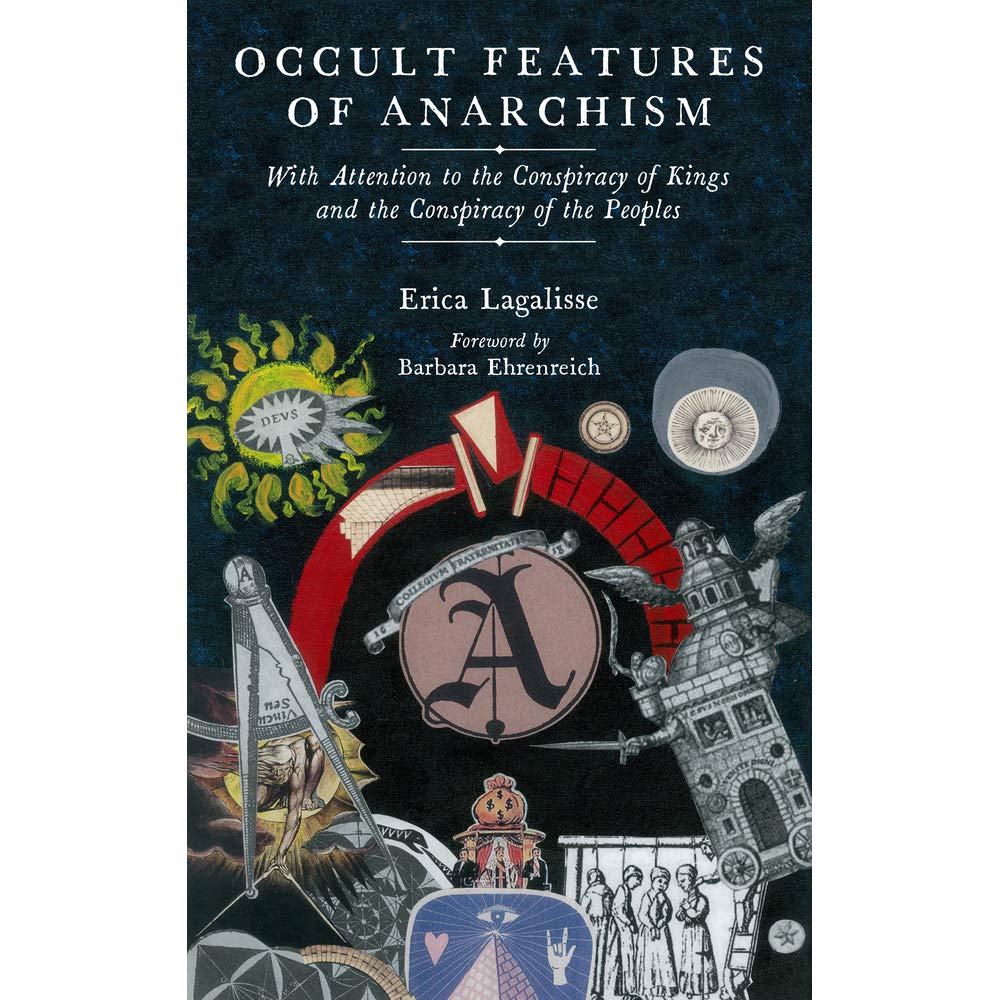
Occult Features of Anarchism dropped at the end of 2018 and it got quite a lot of buzz in certain anarchist circles (as well as rave reviews from people like David Graeber). It sounded like a very unusual text to me and I wasn’t sure I understood what all the hype was about. However, I have been thinking more about the ways in which references to “fake news” and “conspiracy theories” have been used to discount a number of solid “radical Left” criticisms of the status quo and it got me to check out Lagalisse’s work. Wowzers, I’m glad I did. What an interesting book. Lagalisse begins from her experiences within anarchist circles where she observed that women, especially Indigenous women, especially, especially Indigenous women who incorporated a spiritual or religious element into their reflections tended to be sidelined, ignored, or written-off by mostly White manarchists who were operating from something like an Enlightenment-based model when it came to spirituality, religion, and progress. What Lagalisse then goes on to show is that this approach contradicts the views and beliefs of even the staunchest founders of anarchism (Bakunin, Proudhon, etc.) which opens up a whole new trajectory for thought and action when thinking about solidarity networks today. This is furthered by the ways in which Lagalisse traces the development of anarchism within and around the “secret societies” (Free Masons, Illuminati, etc.) that were flourishing at the same time that anarchism was launching. This is a history I knew nothing about but Lagalisse seems like a reliable guide and has spent a lot of hours sorting through a lot of source material to separate the information that is credible from the information that is not. Again, super interesting. But also something that provides a lot of food for thought in terms of how to organize and connect today given the ways in which conspiracy theories are deployed at different levels of society for different ends. Here, Lagalisse’s reflections on how conspiracy theories that arise from below focus on the personal responsibility of some agents or parties, and how this significantly modifies, tempers, or counteracts Foucauldian and post-structuralist discourses about power (which, Lagalisse argues, can actually serve bougie interests by depersonalizing power) is very useful (even if the discourse of conspiracy theories is then re-deployed by the elite in order to present the hoi polloi as stupid). All kinds of food for thought and development here. A great book.
2. Lacan and the Political by Yannis Stavrakakis.
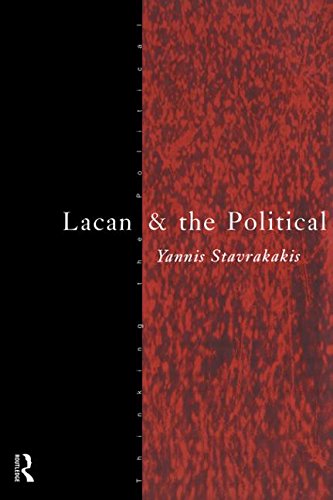
Lacan is an interesting fellow who said a lot of interesting things and influenced a lot of influential thinkers but I’ve always kind of suspected that people who actually end up specializing in Lacanianism have a tendency to want to be the thinkiest thinkers in the room. Part of his appeal, in certain circles, is his esotericism and the complexity of some of what he presents. Becoming proficient in his language and his models and his effing illustrations becomes a status marker amongst intellectuals who are keen for that kind of status. That’s partly why, with several theorists (Heidegger, Lacan, even Foucault), I’d rather struggle through the primary source material, than deal with secondary sources or so-called experts. So, I wasn’t sure what I was going to get when I opened Yannis Stavrakakis’s book but it caught my eye because, unlike many of the theorists who draw on Lacan’s work, politics as traditionally perceived (in both theoretical and popular discourses) isn’t necessarily a thing in which Lacan appears to show much interest. I was very happy with what I got. Stavrakakis obviously cares a lot about his topic but is not invested in showing how thinky his thoughts can be. On a number of themes, I found his presentation to be the most helpful introduction to Lacanianism. The first couple of chapters of this book are, in my opinion, a better place for noobs to start than, say, Žižek’s How to Read Lacan, if they want to get a sense for the Lacanian subject and the question of the real (or, perhaps, it only feels this way to me because I’ve been on a Lacan kick and have a much better understanding of him now than I did when I first read Žižek?). That said, when it comes to politics qua politics, I’m not sure that Stavrakakis’s Lacanian offering provides all that much that is new. His reading fits well with works already offered by Laclau and Mouffe, as well as Badiou and especially (although Stavrakakis does not mention him), Rancière. That said, there is nothing wrong with restating this position with a Lacanian emphasis and I thoroughly enjoyed reading this book.
3. Jesus and the Politics of Mammon by Hollis Phelps.
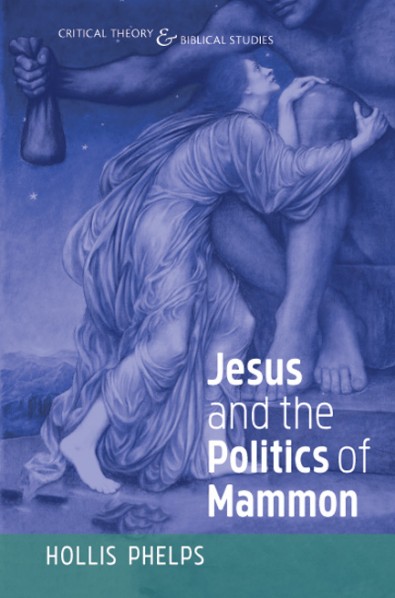
I will have a lot more to say about this book in a future post. Wipf & Stock kindly agreed to send it to me because the author agreed to be interviewed with me on this blog. So stay tuned for that. I expect it to be a very interesting conversation (if I say so myself) and I’m very excited to hear more from Hollis!
4. Whipping Girl: A Transsexual Woman on Sexism and the Scapegoating of Femininity by Julia Serano.
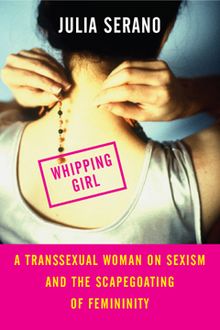
I confess that reading books by trans authors has been something I have not done a lot of over the years. I’ve been trying to rectify this. I read Preciado earlier this year and then decided to pick up this book by Serano (in part, because I got it for a steal of a deal and in part because a trusted source told me it was a good read). I especially like how Serano connects trans-antagonism to misogyny and how she argues that trans-identified women are especially vulnerable to violence because they go against the patriarchal truism that being masculine is far better and more desirable than being feminine and that being a man is far better and more desirable than being a woman. Her remarks in this regard are especially useful in light of the charges that TERFs make about trans women trying to bring “male privilege” into women-only places (which is both a hugely insulting denial of the womanness of trans women, falling into the “oppositional sexism” that Serano does a good job of deconstructing, and which also lacks the great intersectional analysis Serano brings to the matter).
The part about which I am much less sure is when Serano makes her case that every person is born with a “subconscious sex” and “intrinsic gender inclinations” that aren’t quite rooted in biology per se, but which also remain constant throughout a person’s life regardless of cultural influence. In other words, Serano is trying to resist the gender essentialism of some TERFs (and others in the feminist movement more broadly, especially as per de Beauvoir) while also rejecting Judith Butler’s argument that “there is no sex behind the gender” and that what we are are dealing with are performances within the domain of socially constructed categories and possibilities. It’s a tricky act, trying to avoid both of those poles, and I think Serano still ends up with a (slightly modified) gender essentialism. I’m not sure that I can land there myself (any kind of essentialism is difficult for me to understand based on my own views related to ideology and “the real”) but I am identified as a cishet male and I sometimes wonder if part of the appeal of theorists like Butler to people like me is that it creates some living, breathing, and playing space between me and the (problematical) gender assigned to me and which I continue to perform (i.e. perhaps it makes the guilt of being male more bearable?). As I thought further about Serano’s argument, I also felt that there might be room to accept this kind of gender essentialism as one of the ways in which gender is performed. That doesn’t get me to the same core beliefs as Serano but it also gets me out of her way. Which is good. Because, really, it’s not for men like me to mediate these conversations. I’ll be thinking and listening more.
5. Virtuous Violence: Hurting and Killing to Create, Sustain, End and Honor Social Relationships by Alan Page Fiske and Tage Shakti Rai.
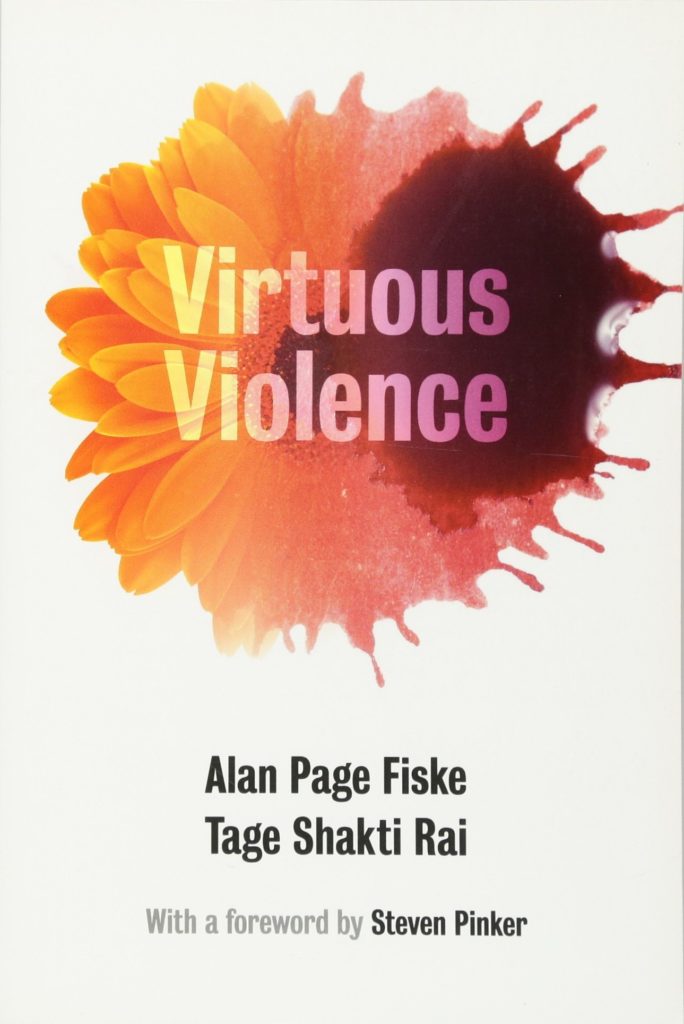
Due to something I saw somewhere a few years ago, I had this book flagged as “to read” (don’t remember why now) but I found it for $1 at a library book sale so I took it home and read it. I should have known that a book with a foreword by all-around-asshole-and-faux-scholar Steven Pinker wasn’t going to sit too well with me…
Anyway, the relationship models that Fiske and Rai deploy for understanding how violence can arise between people from self-identified virtuous motives (whether those relationships are structured in a highly authoritarian manner in a more egalitarian manner) is decent enough. However, there are major limits to their work. First of all, they have a very limited understanding of violence—specifically, they only define violence in a subjective way (i.e., as that which takes place between two subjects; for example, if I punch a Nazi, or if a Nazi sets a homeless Asian person on fire, or if a soldier shoots someone in a war, or if a man sexually assaults a woman). Because of this, they argue that almost all violence is motivated by moral impulses—that is to say, the person who is acting violently believes that they have appropriate and justifiable (i.e., virtuous) reasons for doing so. However, what this entirely neglects is the fact that objective violence (i.e., violence that is structured into the ways in which we share life together; for example, cuts to social services, factory closures, environmental devastation to mine rare earth minerals for smart phones, sweatshop labour, neoliberal economic restructuring, and so on) does far more harm to far more people than the subjective violence Fiske and Rai see as the only kind of violence in the world. Furthermore, this objective violence is much harder to fit into Fiske and Rai’s conclusion that almost all violence has moral motivations—structural violence is almost entirely driven by economic interests regardless of moral calculations, and so this almost have to exclude it a priori in order to try and defend their thesis. The second major problem is the ways in which Fiske and Rai take what perpetrators say about their violence at face value. Granted, it’s important for researchers to get out of their own paradigms and understand how others understand their own actions, but one should not do this with some kind of naïve approach that does not imagine the Other as being able to also promote a self-serving ideological over-coding to their actions (subjective violence, in other words, can’t be so easily cordoned off from objective violence). Basically, the main takeaway from this book is that people who hurt other people usually say that they are justified in doing so. Everything else Fiske and Rai add to this mundane truism is pretty much a write-off.
6. Wolf in White Van by John Darnielle.
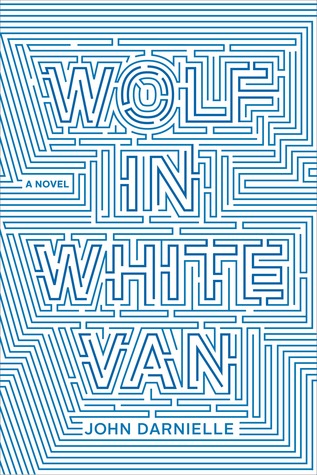
I have always had a soft spot for singers who tell wonderfully sad but defiant stories in their songs. Tom Waits, Bright Eyes, The Antlers, Okkervil River, Two Gallants, The Hold Steady, the bands of both Andy Hull and David Bazan, The Tiger Lillies, and Sufjan Stevens, have all held my interest, not only because of their musical creativity, but also because of the stories they tell (and, I think, this is also a significant factor in why I believe that Pink Floyd’s The Final Cut is the best rock and roll album of all time—it also helps explain why I’ve always liked punk bands like Rancid and Against Me! more than the punk-rocking of NOFX or poppier acts like Green Day and Blink-182). However, few musicians have been so influential in this regard as John Darnielle and his band, The Mountain Goats, which have been going strong (thanks to an especially dedicated cult following) for almost thirty years. So, when I learned that Darnielle had written a few novels and that his first one, Wolf in White Van, was nominated for The National Book Award (as well as earning high critical praise elsewhere), I was pretty excited to check it out.
I have mixed feelings after finishing it. To be honest, I was a little bit disappointed. Darnielle tells the story of a man who, at the age of seventeen shot himself in the face (for reasons that are eventually revealed in the climax of the novel) and goes through life in a reclusive, introverted way, constantly having to deal with others who treat him as disfigured and grotesque. Having researched Darnielle before, I know that he spent some time working with “troubled youth” and part of what I have appreciated about him is the sensitivity that is neither paternalistic nor exploitative that he brings to the stories he tells about such youth (his song, The Best Ever Death Metal Band Out of Denton, is an especially awesome example of this—and I’ve been hailing Satan ever since I first heard it). But, I don’t know, this story did not seem as well-crafted as many of his songs and, also unlike his songs, it felt a bit ableist and I’m not sure that the whole disfigurement element, so crucial to the story, is something Darnielle does well (something, perhaps, I feel more uncomfortable about given that Darnielle himself does not have a reconstructed face?). Also, while others raved about the climax, I’m not sure that I dug it all that much. I mean, it was good but was it worth the wait? I’m genuinely unsure. I’m not sure how much it changes my perspective of the material that came before although I did like the suggestion Darnielle worked into the text that leads the reader to consider the possibility that Darnielle is actually talking about another version of himself as though he is describing something he thought about doing but then did not do at the last minute. Anyway, a bit of a let down but not enough of a let down to make me not want to still read his second book (Universal Harvester). Hard to judge an author based on only one book, ya know? Especially if it’s their first one. Maybe they will get better (or maybe this is the best they have—the culmination of years of thinking, observing, and jotting notes), who knows?
Anyway, I did fact check the story the protagonist tells about the title of the book and, as you will see from this link, it checks out.
7-9. A Wizard of Earthsea, The Tombs of Atuan, and The Farthest Shore (the Earthsea Trilogy) by Ursula K. Le Guin.
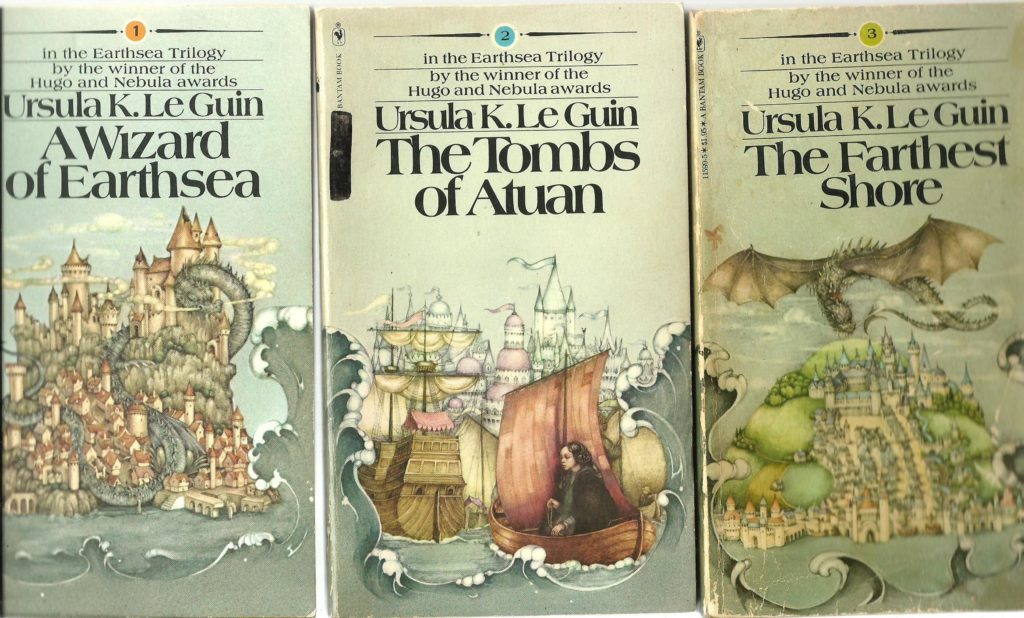
Fantasy, although I hardly read it now, was actually the first genre of literature I really wanted to read. I read The Hobbit and the LOTR over and over from Grade 2 through to the end of high school. However, other then enjoying a few things by David Eddings and Robert Jordan (until I got tired of Jordan stretching his series out ad infinitum), I was mostly frustrated and disappointed by my foray into other fantasy authors (I think, as a child, I was put off by the more “adult” content that other fantasy authors apart from Tolkien incorporated into their work and I still liked moral elements in my fiction as well as happy endings). I haven’t thought too much about going back to fantasy as my literary tastes have continued to evolve but, reading so many great one-liners by Ursula Le Guin (especially from anarchist friends who admired her anti-capitalism) made me decide to read her famous Earthsea trilogy. I’m glad I did. It was a whole lot of fun. Simple but deceptively well-crafted stories. It amazes me what Le Guin is able to do with so few words (writing few words has never been a strength of mine…). I think I’ll check out a few more fantasy series in 2020 (thanks to solid recommendations from my brother Josh who is a reliable guide to these things).
10. Hustling Verse: An Anthology of Sex Workers’ Poetry edited by Amber Dawn and Justin Ducharme.
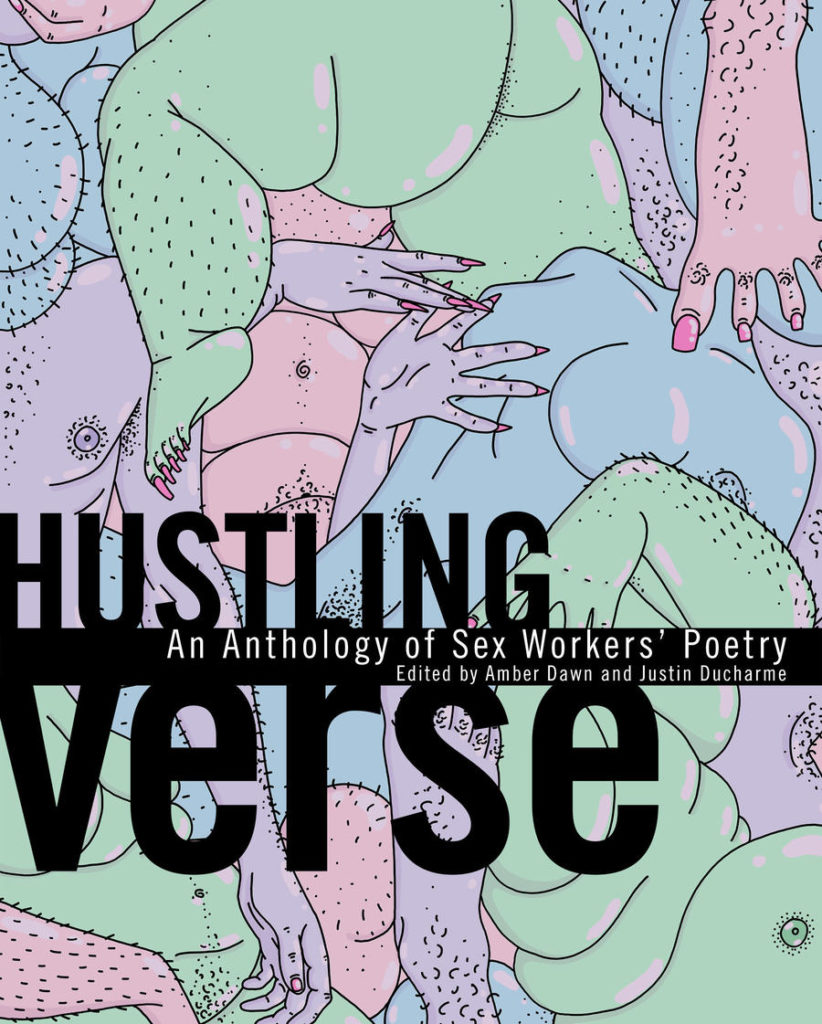
A number of my favourite people in the world are current or former sex workers. Seriously, I’m not seeking to romanticize, exoticize, other, or otherwise dehumanize the rad people who exchange sexual services for some kind of compensation, but these people are my people are they’re fucking awesome. I currently kick it with folx from SafeSpace London (pretty much the best organized group going in London these days) and back in Van I kicked it with the fellas at Boys’R’Us (a drop-in for male-identified sex workers). One of my most cherished books (of the many, many books I own or have owned) is a little zine I have from that time of poetry written by those guys. So, when I saw this anthology of poetry written by sex workers (a number who worked in ‘hoods I knew quite well and one of whom I have known intimately), I jumped at the chance to read it. It’s good. It’s great. It’s fantastic. It captures a lot of what I associate with sex working—intelligence, sharp insight, strength, boundless humour, oppression, and overcoming. Oh, and sometimes sex, too. Recommended reading.
11. Bright Dead Things: Poems by Ada Limón.
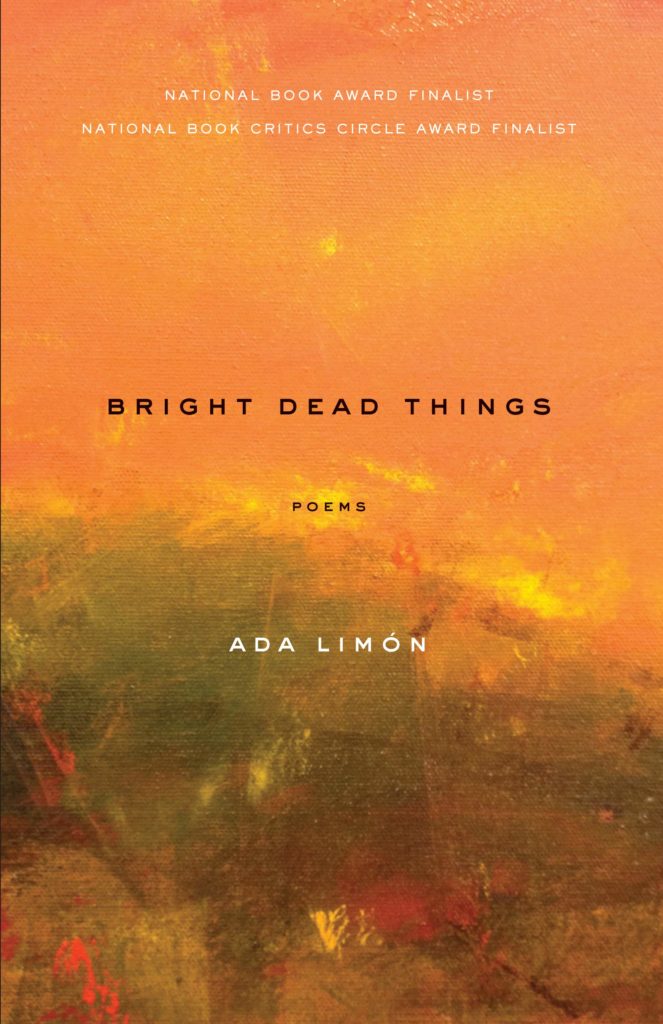
Having been so moved last month by Ada Limón’s The Carrying, I was keen to read this earlier collection of her work. It was still very strong (see my words last month for more about why I love her work) although I felt that it was not quite as strong as her later work. I think she is still developing her perspective in some ways in this work. I feel like she is developing her distinctive way of seeing here—one that really comes into its own in The Carrying. But still recommended.
12. Ghost Of by Diana Khoi Nguyen.
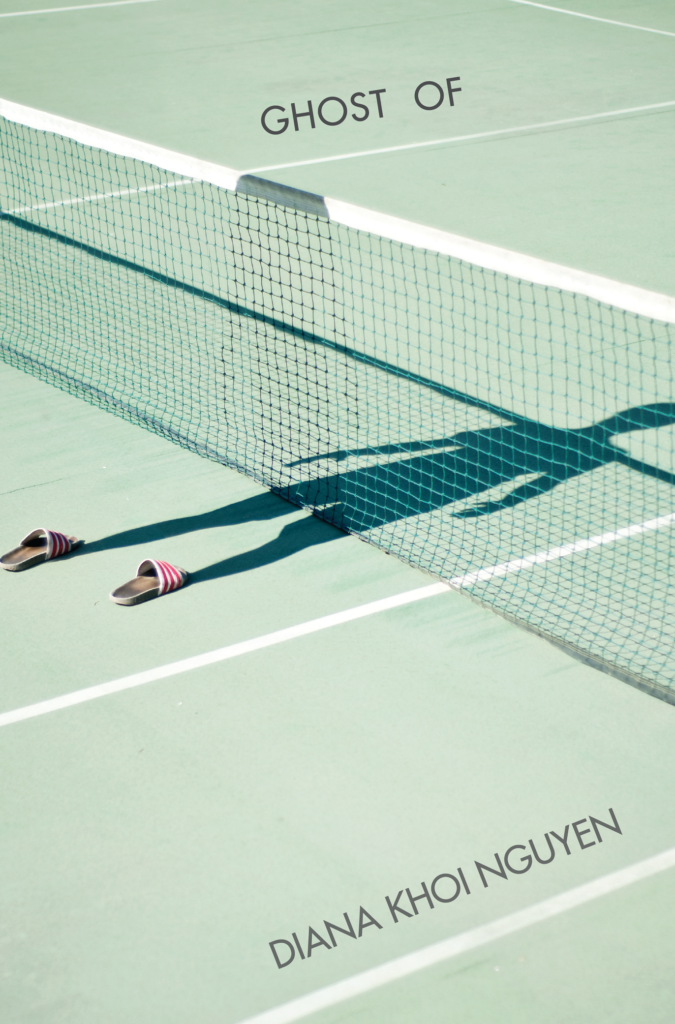
The question that good poets are asking is not so much, “how can I say something original?” (that’s what uninspired poets are asking) but, “how can I actually use words to communicate what I feel, what I experience, what I think both in my mind but also in what is at the edges of my mind, half-formed, just outside the reach of my consciousness?” For Diana Khoi Nguyen, the pivotal trauma/void/feeling/event around which she circles is the absence in herself, in her family, and in life, left by the suicide of her brother (and also, I think, the deeper well from which her family emerged as immigrants to America from Vietnam due to the American invasion there—making her the second poet from such a family that I’ve read recent [the first being Ocean Vuong]). Her poems are moving and thoughtful and, I can’t help but feel, understated—not because she is holding back but because she is so aware of what one can and cannot say about such things. Frequently sad, but I enjoyed reading this collection.
13. Eyes Bottle Dark with a Mouthful of Flowers: Poems by Jake Skeets.
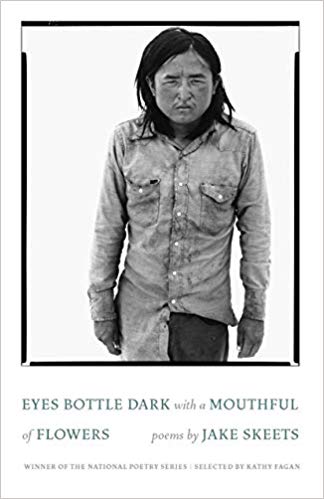
I saw this book in a pic Nick Estes posted on social media and, given my increasing interest in poetry (and especially in poets writing from Indigenous perspectives), I picked it up right away. Some of the initial poems were very strong—especially the part of one that talks about the only ways men touch each other in “this town”—but, I don’t know, a number of the pieces didn’t click with me. There is no doubt they were very well written… just sometimes, as I said before, I feel like technical prowess can override the poetic effect. But that’s just my hang-up.
Movies
1. Suspiria (2018) directed by Luca Guadagnino.
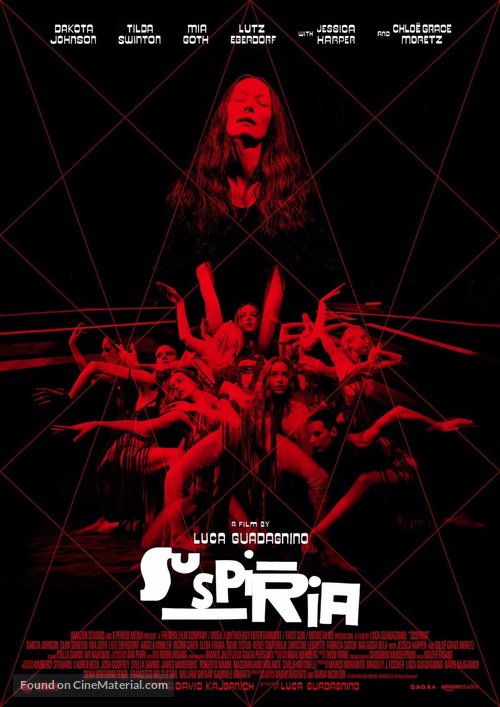
Luca Guadagnino knows his craft and Call Me By Your Name deserved the praise it received, but I was skeptical about watching his remake of Suspiria. The 1977 original by Dario Argento is a masterpiece and not only is it the most renowned work of the distinctive and trend-setting Italian Giallo genre, it also transcends that genre. Why bother with a remake? How in the world are you going to be able to create something close to the impact of the original? Sure, maybe you can create something good, but the original is still going to be better. Think, for example of the American remake of Tomas Alfredson’s Let the Right One In. The remake is okay—but only because it reproduces a lot of Alfredson’s work nearly shot-for-shot. But the original, the original is great (one of my favourite movies of all time).
So, it seemed to me, Guadagnino was stuck biting off more than anyone could chew (although I expected him to still make a decent film and pull in money for the studios who are getting rich off of remaking older films with modern CGI). However, despite my hesitation, I have to admit that Guadagnino did a better job than I thought he would … well … almost. I like the way he played with the witch motif in comparison to the original. Knowing that we already know the spoilers from the first one, Guadagnino never tries to hide the fact that we are dealing with a dance school of witches. But the twist he throws in at the end is a very good one (one that I won’t spoil). Props to the writers for that (and props to Dakota Johnson who I thought actually did a great job in the lead role—and also to Tilda Swinton who, I discovered after the fact, very convincingly played both a key female role and the key male role!).
However, I think Guadagnino got lost by trying to move the story to Berlin during the Cold War. He tried to draw connections between the school and the events with the dancers and the witches to German reconstruction and the push against both capitalism and authoritarian communism occuring in West Brelin at the time—but he did none of this successfully. I was left baffled as to what exactly he was trying to say and, after going to the critics seeking clarification, I found them just as baffled as me. It’s a little too bad because, I think, the movie would have actually pulled off a solid remake if this element hadn’t been thrown in (although G. & Co. talk about getting interested in the film precisely because they felt this piece would really set it off from the original!). Anyway, all in all, decent but not great.
2. The Banishment (2007) directed by Andrey Zvyagintsev.
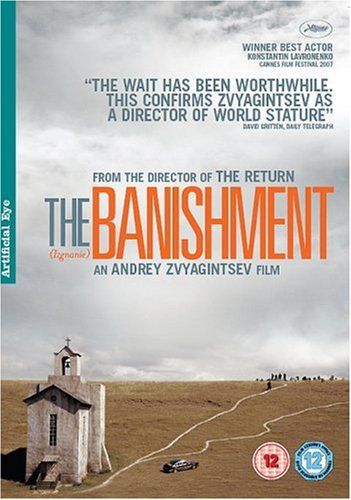
Andrey Zvyagintsev has become one of my favourite filmmakers and this is now the third film of his that I have watched. His 2017 film, Loveless, is one of the most moving pieces I have ever watched and 2014’s Leviathan is also top-notch. The Banishment is an earlier work and isn’t quite as strong but is still an excellent movie. It is very Russian and it’s hard not to think of Dostoyevsky and Tarkovsky and Loznitsa when viewing it. If you like those things, you will like this movie. And I do (and I did). But, yeah, if you haven’t watched Loveless yet, start there. Just be prepared to be devastated by it.
Documentaries
1. Quiet Killing (2018) directed by Kim O’Bomsawin.
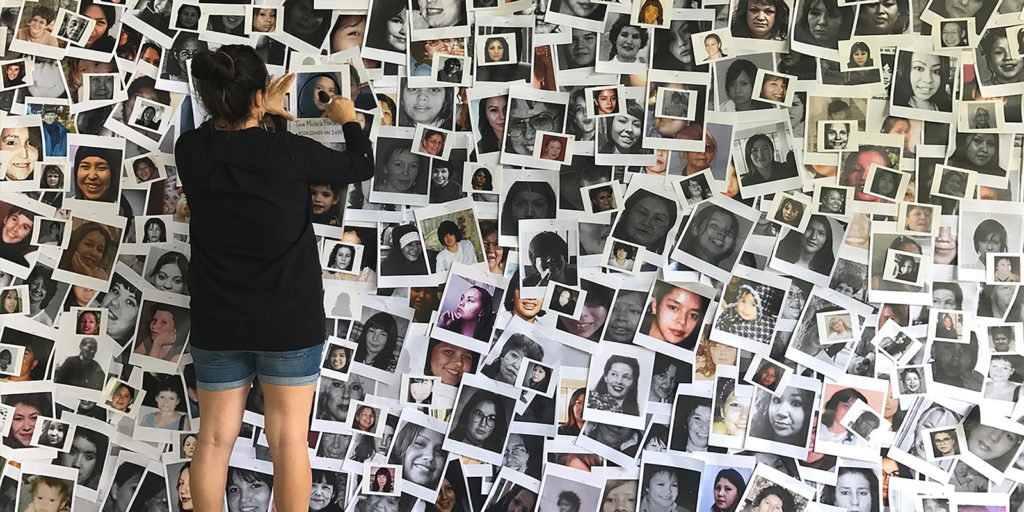
Kim O’Bomsawin looks at the Canadian-perpetuated genocide against Indigenous women and girls, focusing on intersectional elements of oppression that make Indigenous women and girls especially vulnerable to being killed or disappeared. She spends a fair bit of time focusing on the experiences and voices of Indigenous women who engage in sex work (an added layer of oppression given the ways in which sex work is criminalized and the ways in which cops view sex workers as disposable). It’s a thoughtful, respectful, and important work. If you live in Canadian-occupied territories, I suggest you watch it.
2. Qallunaat! Why White People are Funny (2007) directed by Mark Sandiford.
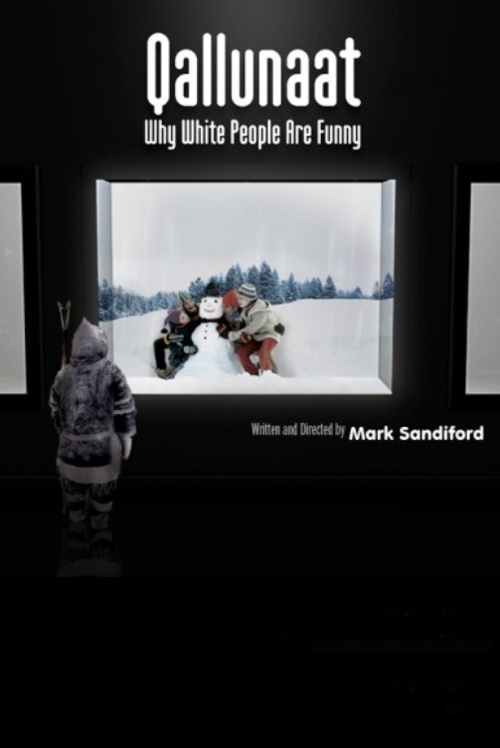
Mark Sandiford does a great job of flipping the script on Eurocentric anthropology and, with both insight and humour (and not the biggest budget…), reveals what it’s like for White people to be on the receiving end of studies, experiments, and treatments that White people have pushed on Indigenous peoples since they first arrived at Turtle Island. The effects are a bit cheesy but the points are actually quite brilliant.
A lot of more popular studies of Indigenous cultures and authors tend to neglect the far North but, the more I learn about Inuit culture, politics, philosophy, and spirituality, the more impressed I am by it (Sandiford’s mixture of wisdom with humour seems to me to be a regular feature in Inuit pedagogies). Sandiford also goes over some of the history of contact between Europeans and the Inuit and what the elders foretold about this contact (which was what came to pass). I enjoyed this documentary. The North is always calling me. I’m not sure why. I’ll get there one day.
3. nîpawistamâsowin: We Will Stand Up (2019) directed by Tasha Hubbard.
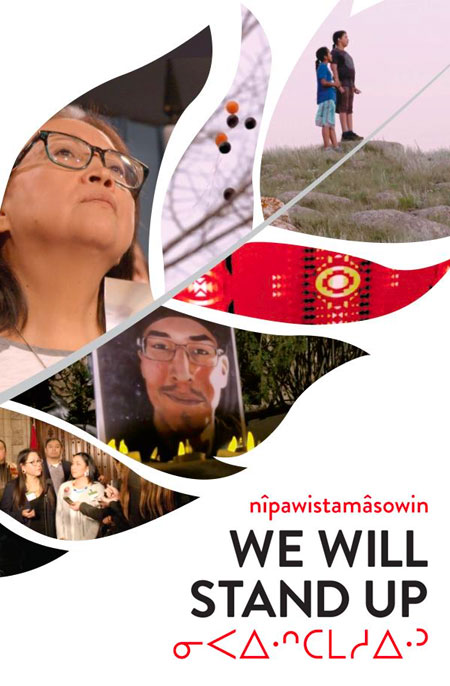
Tasha Hubbard’s latest work is one of the most heart-breaking films I have seen in some time. Not only it is heart-breaking to see the ease with which White people are able to murder young Indigenous men in Canadian-occupied territories, but it is heart-breaking to see the ways in which Canadian efforts to brand themselves as “working in the spirit of mutual respect and seeking truth and reconciliation” keep roping suffering Indigenous survivors and family members back into seeking change via state-designated avenues (like the courts and political advocacy). Of course, people are directed into these avenues so that the Canadian authorities can control what changes do or do not take place, so that Canadian authorities can brand themselves in a certain way, and so that the possibility of any truly meaningful change for Indigenous peoples is eliminated, and so it is absolutely gutting to see people who are hurting so badly and who are fighting so vigorously (regardless of what it costs them personally) constantly offered false hopes that betray them. Time after time after time. These people are engaging in a seemingly superhuman struggle and being exploited and undercut every step of the way by the very people who claim to have their best interests in mind. It’s brutal. And that’s the Canadian way.
The immediate focus of the movie is Gerald Stanley’s execution-style murder of Colten Boushie (a White farmer who shot a young Indigenous man point-blank in the back of the head because that young Indigenous man was in a vehicle in Stanley’s driveway). The subsequent investigation by the RCMP was poorly done and a lot of evidence was destroyed while Colten’s body was left lying in the rain on Stanley’s driveway. Indigenous people were then prevented from serving on Stanley’s jury and, in fact, White farmers (and other White Canadians) rapidly raised nearly $100K via GoFundMe to provide Stanley with legal support (all while celebrating what he did through various social media channels—including local cops celebrating the act in a facebook page that they used). Although there was no question that Boushie meant no harm, and although there was no question that Stanley chose to go inside and get a gun, and although there was no question that Stanley shot Boushie in the back of the head from close range, and although there was no question that Stanley and his family did nothing to try and administer CPR to Boushie, Stanley was found not guilty of both murder and manslaughter charges. Boushie’s family’s efforts to appeal the case were denied. Then, because of the publicity and movement the family was generating (including the considerable press and achieving access to the UN), several politicians met and had photo-ops with the family (from the Provincial Premiere to Prime Minster T2). They all talked about wanting to better understand how to be good partners to Indigenous communities, in a spirit of mutual respect and reconciliation (fuuuuuck) and they all went on to do nothing. I would like to suggest that they never intended to do anything. Placate and defer, placate and defer, placate and defer and then continue to fuck them until they give up, go away, or die, these are the strategies large institutions and colonial governments use. Very strongly recommended viewing for Canadians.